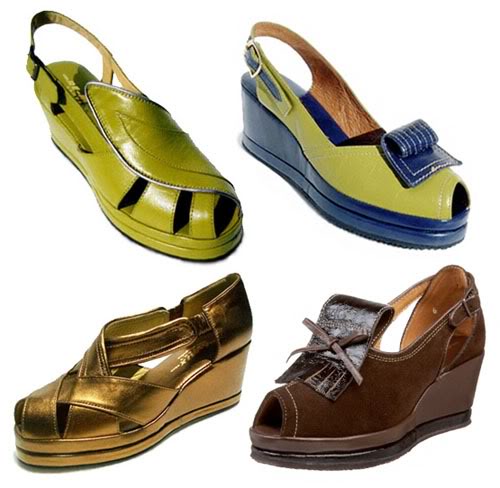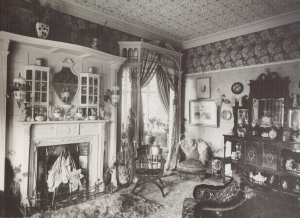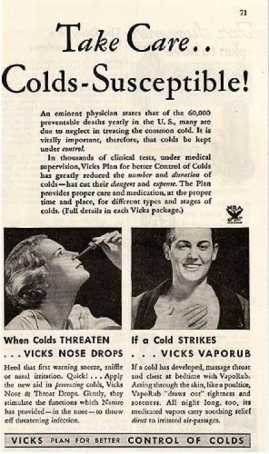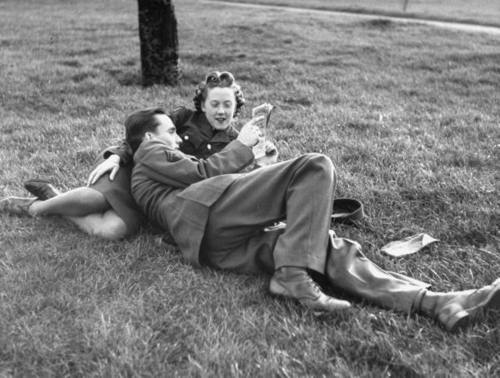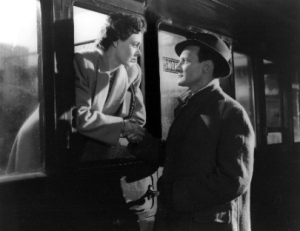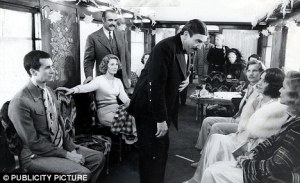Walk into any vintage clothes shop in London and chances are there’ll be a basket in the corner piled high with a delicious selection of headscarves. Aside from providing the most comfortable sort of bedding a furry creature could wish for (the cat in Beyond Retro, Brick Lane will vouch for this…) these baskets are veritable treasure-troves for the perpetually short of cash. The scarves are so cheap you see. So, SO cheap!
And real and extraordinary bargains are to be had – as I found upon selecting a particularly delightful silky specimen some months back for a couple of pounds. Imagine my delight when, several weeks later, close and quite random inspection lead me to discover the tiniest most sneakily hidden writing within this scarf’s paisley twists…. LIBERTY!
Now I’m not saying that I now own something worth a whole lotta dollar (as I imagine my American chums might say) but a certain smugness has certainly abounded within me since this discovery. What fine taste I must have to have picked out a Liberty from such a great quantity of scarves!
Needless to say, I have since become a bit of a headscarf nut and spend far too much time rummaging around these aforementioned baskets in EVERY vintage store I come across. No more Liberty triumphs as of yet… but who’s to say what’ll crop up next? I am all eager anticipation!
So, whilst the Liberty sort are few and far between, the common vintage headscarf is not scarce. What I would say, though, is that the number of people that I see wearing headscarves in any way other than THIS is scarce.
Thanks, Rihanna for illustrating my example 😉
Now don’t get me wrong, I like this look very much. In fact, I’ve sported it myself a fair few times. The only point I’d like to make is that this styling seems to evoke more of an 80s vibe than anything else.
And the headscarf has so much in terms of styling options for the vintage enthusiast!!
Below is a wee summary of the headscarf and it’s various stylings throughout the (vintage) ages:
 Kicking off in the 1920s, the original IT girl, Clara Bow rocked a particularly cool headscarf. In one of her most iconic photos, she wears the scarf tied around her head, knotted to the side, her hair pouffing and spilling over the top and the scarf ends draping gently over her shoulder. What a minx!
Kicking off in the 1920s, the original IT girl, Clara Bow rocked a particularly cool headscarf. In one of her most iconic photos, she wears the scarf tied around her head, knotted to the side, her hair pouffing and spilling over the top and the scarf ends draping gently over her shoulder. What a minx!
The 1930s were a little void of the headscarf (according to my research) so we’ll nimbly skip over them and move on to the 40s …
 During the war period, it was all about the ‘Rosie the Riveter’ look. Headscarves became a practical solution for preventing locks getting tangled in machinery as our girls kept the country going whilst the men were away fighting. The fact that this styling looked pretty darn cute is, I assume, a happy co-incidence.
During the war period, it was all about the ‘Rosie the Riveter’ look. Headscarves became a practical solution for preventing locks getting tangled in machinery as our girls kept the country going whilst the men were away fighting. The fact that this styling looked pretty darn cute is, I assume, a happy co-incidence.
The Rosie (as I affectionately call this styling) is the look I adopt most frequently when wearing a headscarf – It’s simple to execute, can hide a whole lot of unwashed hair and, provided that it’s secured with a few killer-strong kirby grips, will last through an entire night of dancing – which is testament indeed.
 As we move into the 1950s, the headscarf becomes more of a glamourous accessory than a safety necessity. Think Grace Kelly, sitting in the passenger seat of an impossibly beautiful sports car as it is raced across the sublime landscapes of Monaco by a Cary Grant type. The headscarf serves two purposes here:
As we move into the 1950s, the headscarf becomes more of a glamourous accessory than a safety necessity. Think Grace Kelly, sitting in the passenger seat of an impossibly beautiful sports car as it is raced across the sublime landscapes of Monaco by a Cary Grant type. The headscarf serves two purposes here:
1. It keeps a lady’s hair looking immaculate rather than wildly windswept.
2. It looks effortlessly classy – particularly when accompanied by a pair of upswept sunglasses…
Later decades give us yet more variations of headscarf styling but I can’t stop to go through all of them now though – I’m off to find a dashing chap on the Riviera… and yes, the LIBERTY is coming with me…







